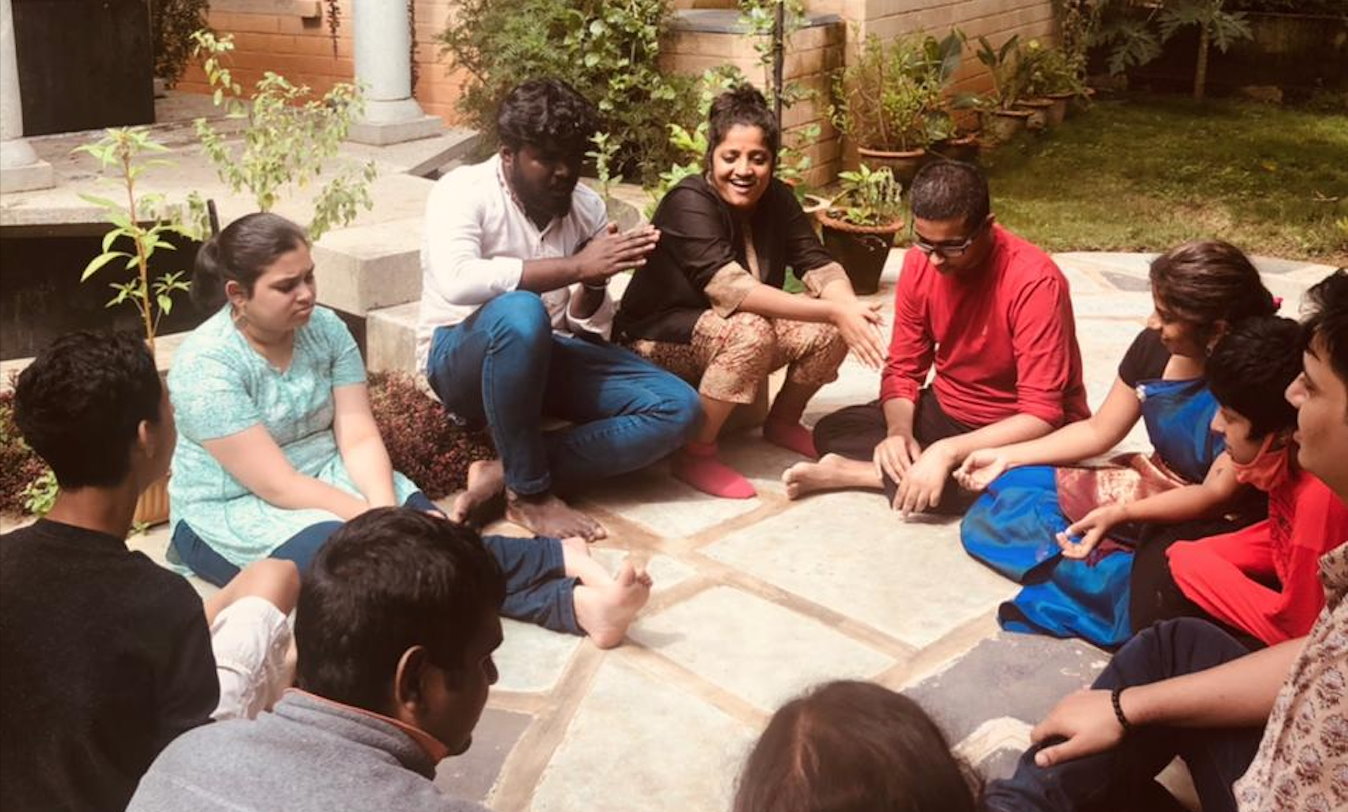As the arts form the basis of Snehadhara Foundation’s way of life, our interactions with inspiring artists both within our student circle as well as professional ones, makes us witness artistic confluences all the time. Our Nelamangala campus has been witness to many a creative experience, steeped that it is in the heart of nature. Drawing from the abundance of nature and its impact on a space so sacred that it is so much more than just a venue, Snehadhara Foundation took the spirit of community a step further with its newest series: Artists in Residence.
Kickstarting this was Bindhumalini Narayanaswamy, popularly known as simply Bindhumalini. In the Snehadhara family, she’s that cheerful Bindhu Akka in whose name our eponymous circular hall stands. Evoking a sense of compassion and sympathy, Bindhumalini the raga is every bit like Bindhumalini the singer, whose presence on campus has always been enriching for children of our Direct Care. To have her stay with them and watch her at her artform more closely, has been a very visceral form of learning for the children and for Bindhu herself.
The Artists in Residence series has been conceptualised to have artists come and reside with children on campus, share their stories, teach their art forms, and engage with everyone on a holistic level. Through this, the children also greatly benefit as they get access to knowledge on varied art forms, get the chance to learn from talented folk, and build their social circle.
When she arrived with bags in tow, Bindhu was immediately integrated into the Snehadhara day following reintroductions with the children. Soon she was observing the odd session, ensuring that she got to interact individually with each child on Day 1. The closed the evening with a musical night assembly that saw her sing two Malayalam, one Kannada and one Hindi songs.
Over the course of the next two days, Bindhu paced herself by balancing her student engagement time with her personal time for reflection and general being. She had two sessions with each group where she sang and had the group sing along with her at times. The children were thrilled to sing along, immersed that they were in the beauty and sanctity of her transformational music. Despite her previous interactions with the children at Snehadhara, Bindhu had her own apprehensions about what a 3-day stay would entail. If she would indeed be able to reach out to the children, if she’d be as effective, if she’d inadvertently set off someone’s mood…the anxiety over creating a mutually beneficial experience on the campus was looming in her mind, only to dissipate as soon as she came to the campus.
“The whole flow of the routine was a perfect balance between activity and rest. I got the freedom to float around and do my own thing, as well as be with the children. This also helped me find my own bearings. A space like this also throws a lot of deeper questions that one should ideally engage in about life and everything. As an artist it compels you to think: ‘What truly is a performer-audience relationship?’ ‘How does the feedback loop work regularly and in a space like this?’ If I’m able to have this rhythm outside of this space, that’ll be a lovely takeaway,” Bindhu says, satiated with her time on the campus and touched with the gratitude that the children have shown.
Recognising that the children here operate in a heightened space that enables them to be very perceptive, Bindhu was most intrigued by how they take in and assimilate their surroundings, especially since so much of their observation and acknowledging happens without direct eye contact. “I know even if I’m 10 ft away, my presence is felt. I became aware of how to be careful to gently be around and not necessarily move in to change anything that’s already ongoing. Knowing that everything about me in some way or the other is probably getting absorbed in a way you don’t expect others to do. Beyond eyes and ears, here there’s so much of touch and smell and movement, aware of how it would be to enter someone else’s energy field. I learnt to negotiate their spaces with care and acknowledge that there are so many other dimensions that these children can access.”
And in navigating through these spaces and charting her own introspective path, Bindhu and the children understood newer dimensions of perception, learning, and living.

